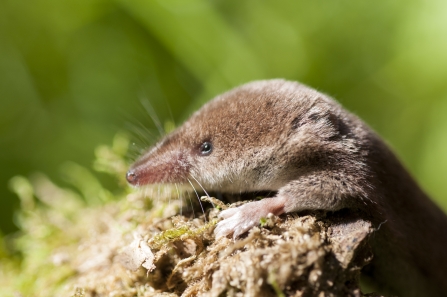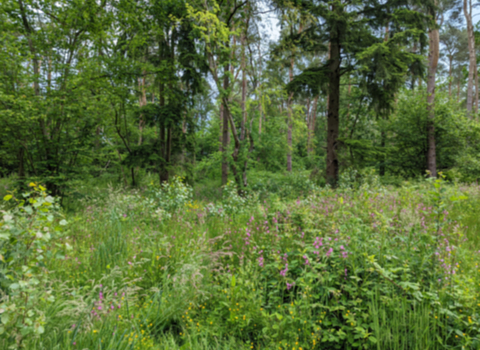In the UK, our woodland wildlife is used to habitats made up of native tree species. The conditions created by native trees, like oak, ash, and birch, provide food for insects and homes for a variety of wildlife. The more native tree species a woodland contains, the higher the diversity of wildlife it can support. This is the basis for ongoing work at Oakley Wood.
Oakley Wood, just south of Warwick, is what is known as a ‘Plantation on Ancient Woodland Site’. It has been wooded since at least 1600, but after the Second World War the woodland was cleared and replanted with non-native conifers to help provide more timber. As a result, the woodland lacked native trees and was not ideal for wildlife, which would benefit from a more diverse range of trees. To help more native species grow Warwickshire Wildlife Trust and Warwick District Council, who own the woodland, are carrying out management over the next 25 years to help restore the site.
Our vision for the woodland is to transform it into a thriving and diverse broadleaved wood, full of wildlife and loved by visitors.

Steven Cheshire
The work is being carried out using a variety of techniques. Where native broadleaved trees already exist in the woodland, such as oak, birch and willow, we have been thinning out the woodland. Focussing on removing conifers, we are giving more space to broadleaved trees so that they can grow larger without as much competition, and spread their seeds. This work also lets more light down to the woodland floor to encourage the growth of new trees, which provides a diverse structure to the woodland for wildlife and safeguards the woodland’s future. Where there aren’t any broadleaved trees remaining, we are thinning out the woodland and replanting with broadleaved trees.
With the increase in visitor numbers to the wood in recent years, some of the paths were becoming wide and muddy and important wildflowers and habitat were being trampled. We have upgraded the path network around the wood to protect the important woodland edge habitat.
It is important that this work is done over a long period of time so that wildlife doesn’t lose its home as the wood changes. Some of the conifers will be kept for their visual value, carbon storage and the limited wildlife benefit that they do provide, such as food for birds found in their seed cones.



